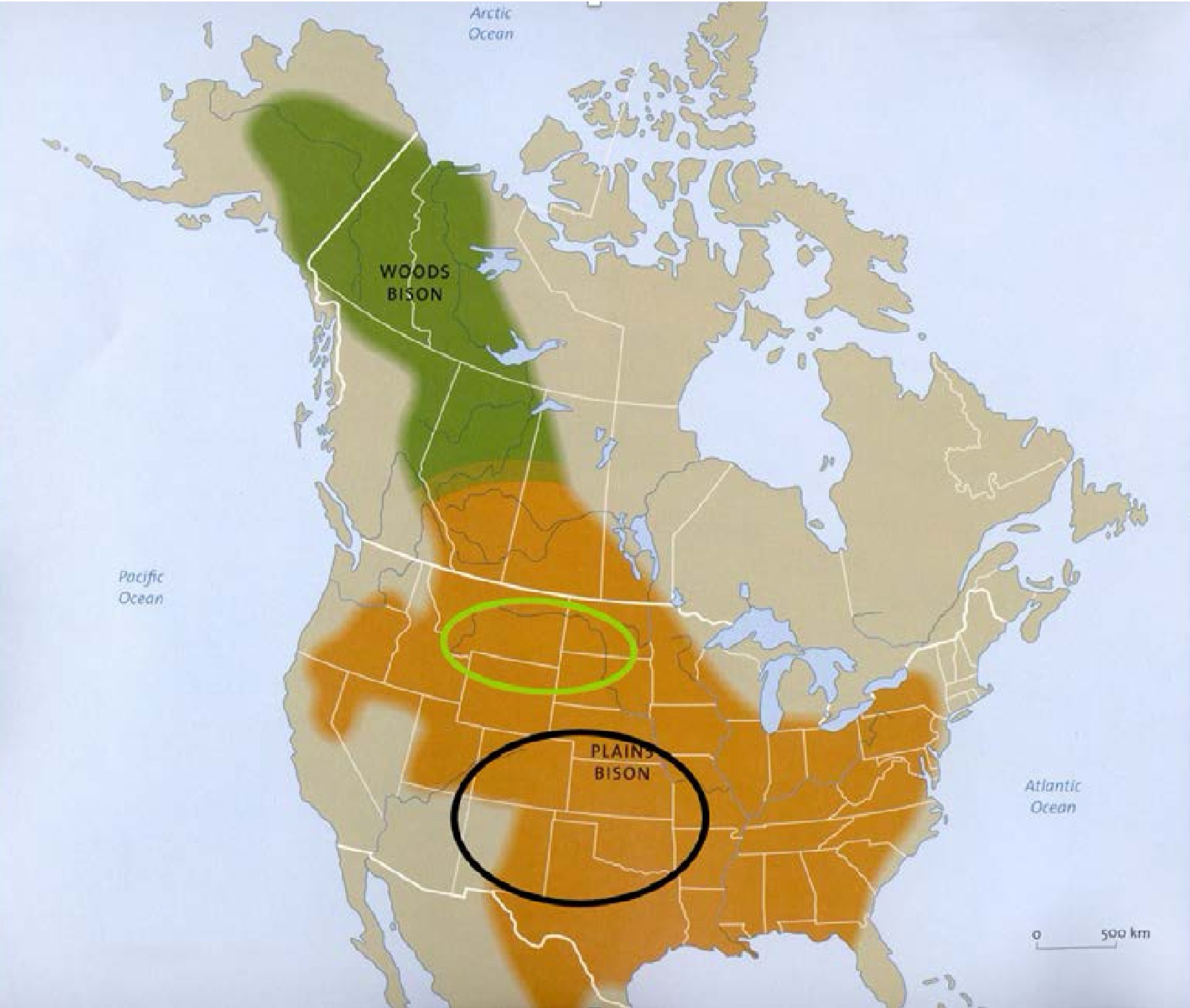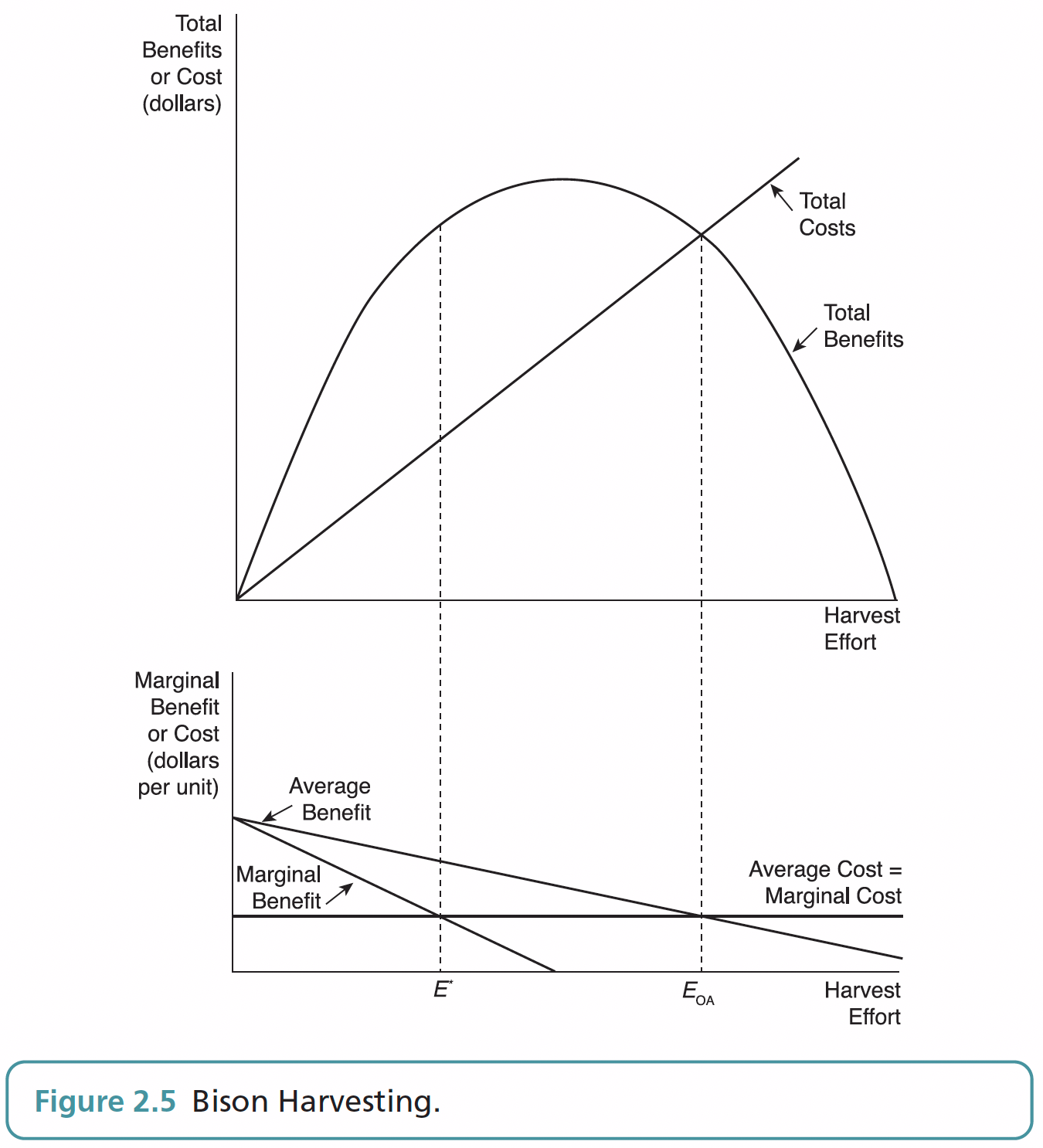Lecture 5
Property Rights, Externalities, and Natural Resource Problems
September 6, 2024
The Economic Approach: Property Rights, Externalities, and Natural Resource Problems
Externalities as a Source of Market Failure
Valuing mangrove conservation in southern Thailand

Over half of 1100 hectares of mangrove swamps cleared for commercial shrimp farms in Tha Po village, Surat Thani Province, Thailand.
Consequences of mangrove destruction:
- Decline in fish catch
- Increased storm damage
- Water pollution
Externalities as a Source of Market Failure
Valuing mangrove conservation in southern Thailand
- Economic analysis (Sathirathai and Barbier, 2001):
- Value of mangrove ecological services: $27,264–$35,921 per hectare
- Economic returns to shrimp farming (corrected for subsidies and pollution costs): $194–$209 per hectare
- Financial returns to shrimp farmers (with subsidies, ignoring external costs): $7,706.95–$8,336.47 per hectare
- Key finding: Preserving remaining mangroves is more economically efficient
Externalities as a Source of Market Failure
Valuing mangrove conservation in southern Thailand
Problem: Shrimp farmers, due to subsidies and not bearing external costs, are incentivized to convert mangroves
Conclusion: Without regulation or collective action, conversion to shrimp farming will continue despite being socially inefficient
Communities in Thailand are restoring degraded mangrove forests to grow and harvest clean, healthy shrimp. (National Geographic, 2016)
- If mangrove forests are so beneficial to coastal Thai communities, why have so many forests disappeared?
- Why aren’t all Thai or other Southeast Asian fish farmers embracing reforestation?
Externalities as a Source of Market Failure
Alternative Property Right Structures and the Incentives They Create
Private property is not the only regime of defining entitlements to resource use.
- State-property regimes:
- Governments own and control property.
- Common-property regimes:
- Property is jointly owned and managed by a specific group.
- Res nullius or open access regimes
- No one owns or exercises control over the resources.
- State-property regimes:
Externalities as a Source of Market Failure
Alternative Property Right Structures and the Incentives They Create
- State-property regimes exist to varying degrees in virtually all countries of the world.
- Parks and wilderness preserves, for example, are frequently owned and managed by the government.
- Problems with efficiency can arise in state-property regimes when the incentives of bureaucrats, who implement and/or make the rules for resource use, diverge from the collective interests of society as a whole.
Externalities as a Source of Market Failure
Alternative Property Right Structures and the Incentives They Create
- Common-property resources are shared resources that are managed in common rather than privately.
- Entitlements to use common-property resources may be formal, protected by specific legal rules, or they may be informal, protected by tradition or custom.
- Common-property regimes exhibit varying degrees of efficiency and sustainability, depending on the rules that emerge from collective decision making.
- While some very successful examples of common-property regimes exist, unsuccessful examples are even more common.
- Successful examples of a common-property regime often involves rules founded on reciprocity and trust among community members.
Externalities as a Source of Market Failure
Alternative Property Right Structures and the Incentives They Create
Res nullius property resources, or open-access resources by definition do not have a process for controlling access to this resource, because no individual or group has the legal power exercise that control.
Open-access resources have given rise to what has become known popularly as the “tragedy of the commons”.
Externalities as a Source of Market Failure
Alternative Property Right Structures and the Incentives They Create
Bison are an example of “open-access, common-pool” resources.
Common-pool resources are non-excludible and rivalrous.
- A good is excludable if the provider of the good can prevent people who have not paid for it from using or consuming it.
- A good is rivalrous if its consumption by one individual reduces its availability for consumption by others.
Externalities as a Source of Market Failure
Alternative Property Right Structures and the Incentives They Create

Externalities as a Source of Market Failure
Alternative Property Right Structures and the Incentives They Create

Northern and Southern Herd of Bison in 1865
- In the early history of the United States, bison were plentiful; in the absence of scarcity, efficiency was not threatened by open access.
- Over time, the demand for bison increased and scarcity became a factor.
- As the number of hunters increased, eventually every additional unit of hunting activity increased the amount of additional time and effort required to produce an additional yield of bison.
Externalities as a Source of Market Failure
Alternative Property Right Structures and the Incentives They Create

Surplus is measured as benefits (or revenues) received from the harvest minus costs.
Total benefit is calculated by multiplying the price per bison by the number of bison harvested at each level of hunting.
The upward-sloping total cost curve reflects the fact that increases in harvest effort result in higher total costs.
Externalities as a Source of Market Failure
Alternative Property Right Structures and the Incentives They Create

- Marginal benefit curve is downward sloping because as the amount of hunting effort increases, the bison population size decreases.
- Smaller populations support smaller harvests per unit of effort expended.
Externalities as a Source of Market Failure
Alternative Property Right Structures and the Incentives They Create

- The efficient level of hunting activity in this model, \(E^{*}\), maximizes the surplus.
- Maximizes the distance between benefits and costs in the top graph.
- Marginal benefit equals marginal cost in the bottom graph.
Externalities as a Source of Market Failure
Alternative Property Right Structures and the Incentives They Create

- Under open-access, individual hunters lack the incentive to preserve the surplus by limiting their hunting efforts.
- This leads to exploitation until total benefits equal total costs (\(E_{OA}\)).
- Overexploitation occurs because hunters cannot capture the surplus.
Externalities as a Source of Market Failure
Alternative Property Right Structures and the Incentives They Create
In the presence of sufficient demand, unrestricted access will cause resources to be overexploited
The surplus is dissipated—no one is able to appropriate it, so it is lost.
Unlimited access destroys the incentive to conserve.
- A hunter who can preclude others from hunting his herd has an incentive to keep the herd at an efficient level to preserve the surplus.